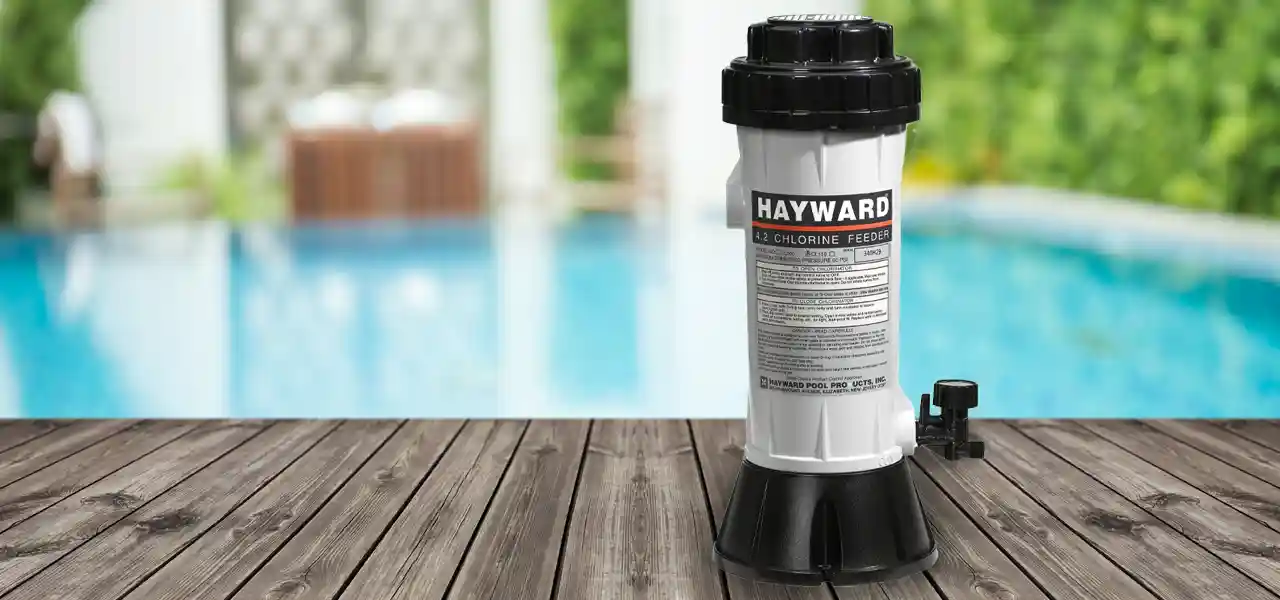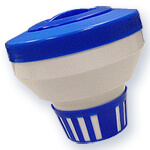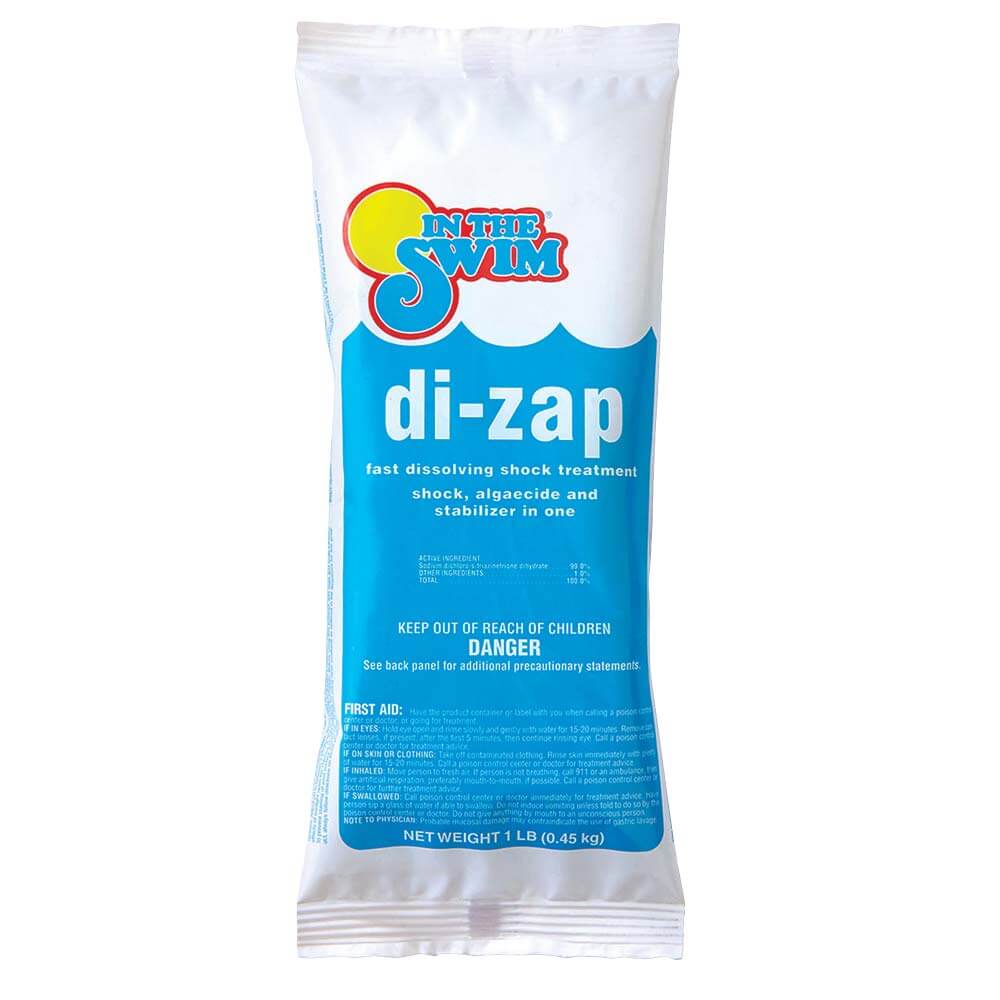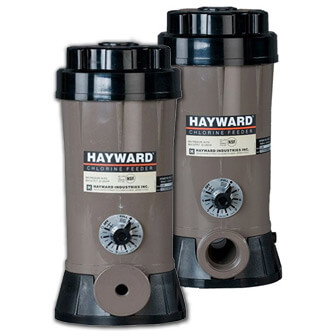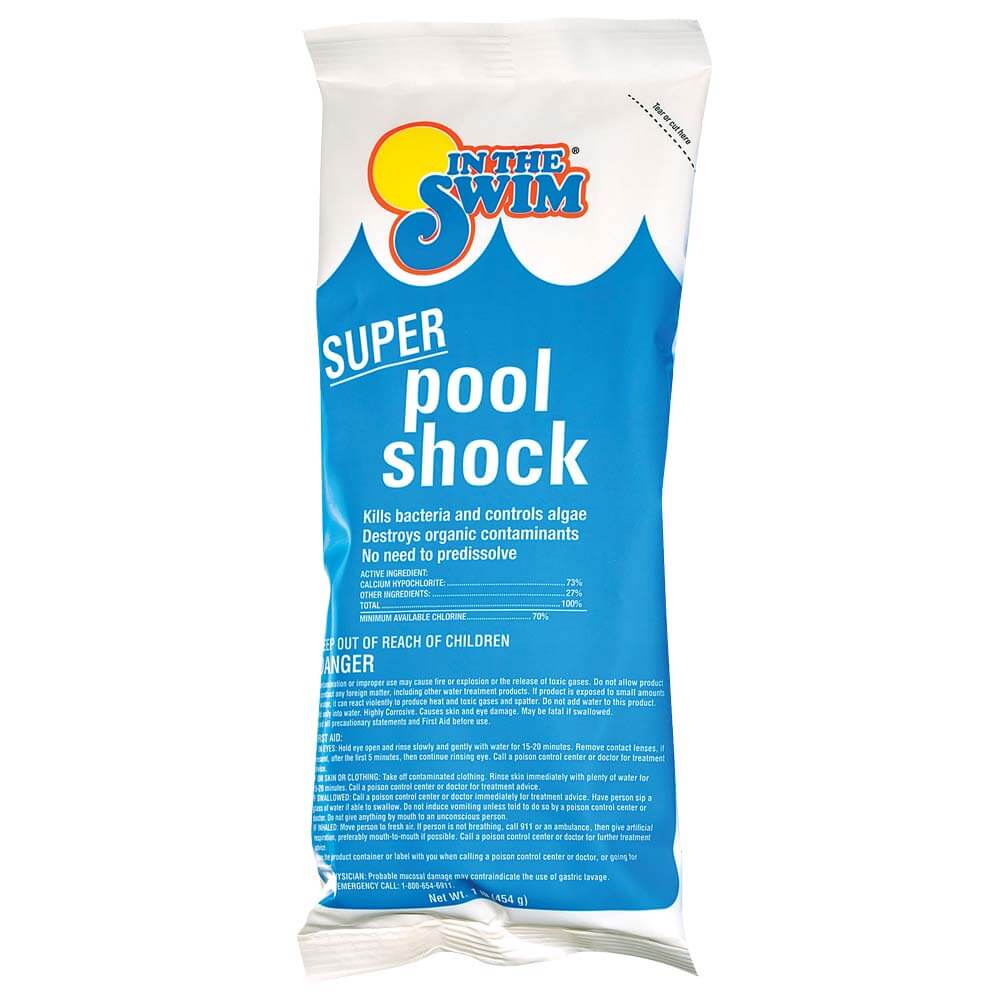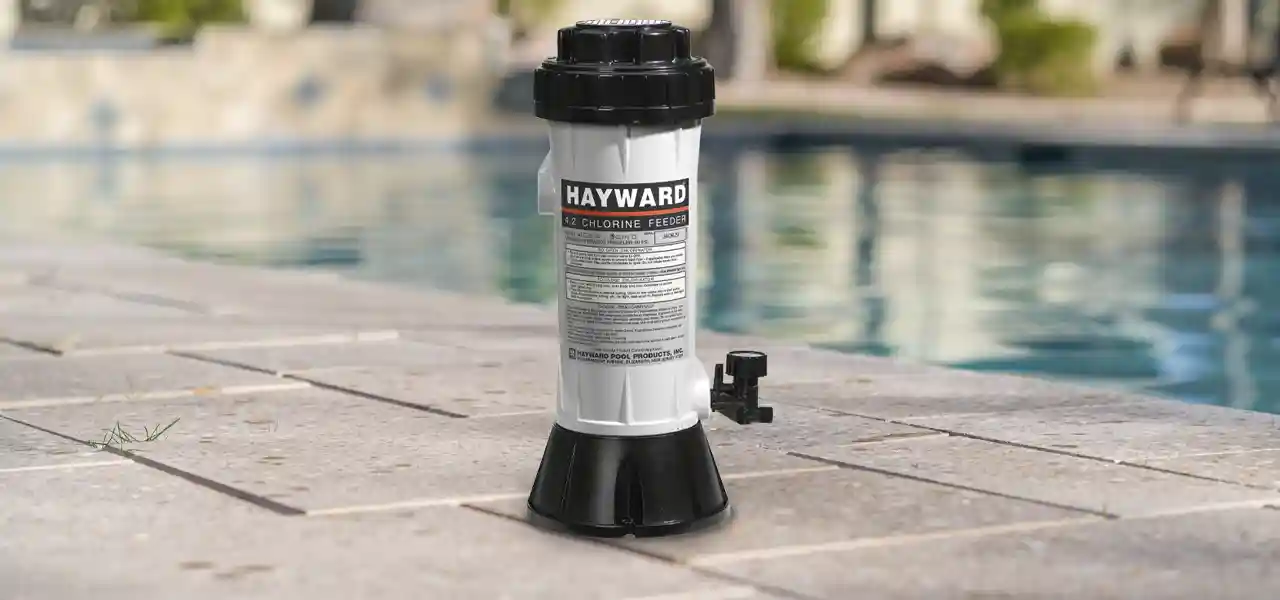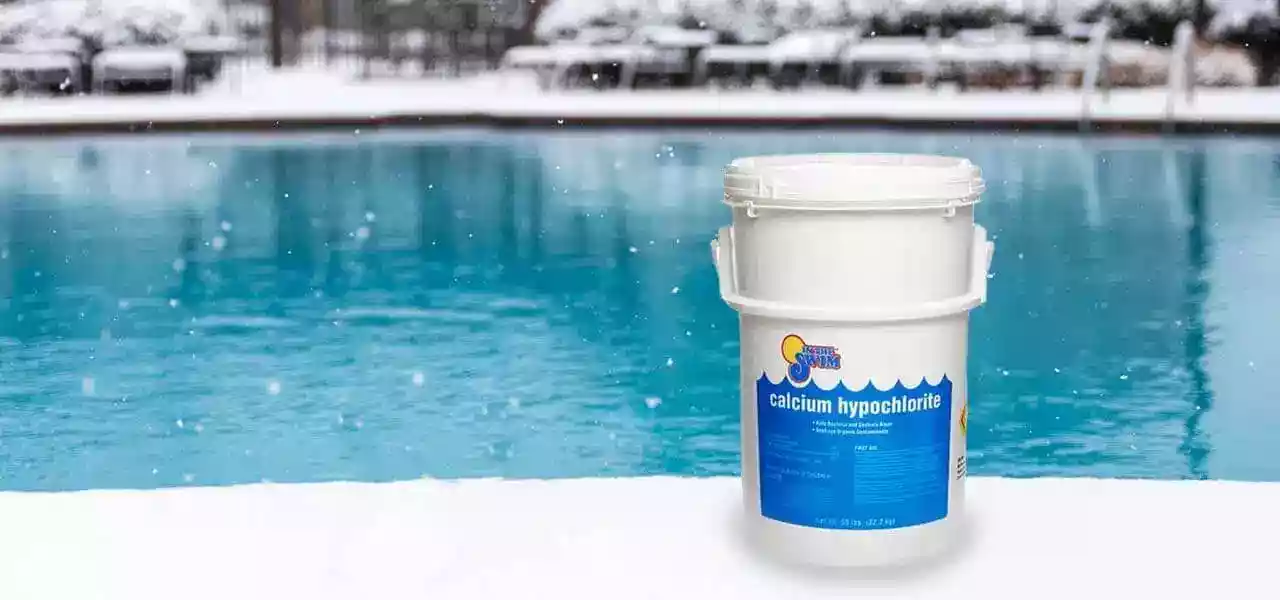Pool chlorinators are simple devices. They simply allow water to flow over the tablets or sticks, adjusted by a dial on the side of the chlorinator. Most will hold enough chlorine, around 9 pounds, to last two weeks for the average size swimming pool. But just like any type of pool equipment, your pool chlorinator can develop problems. Thankfully, we’re here to show you how to handle the most common pool chlorinator problems.
Off-Line vs. In-Line Chlorinators
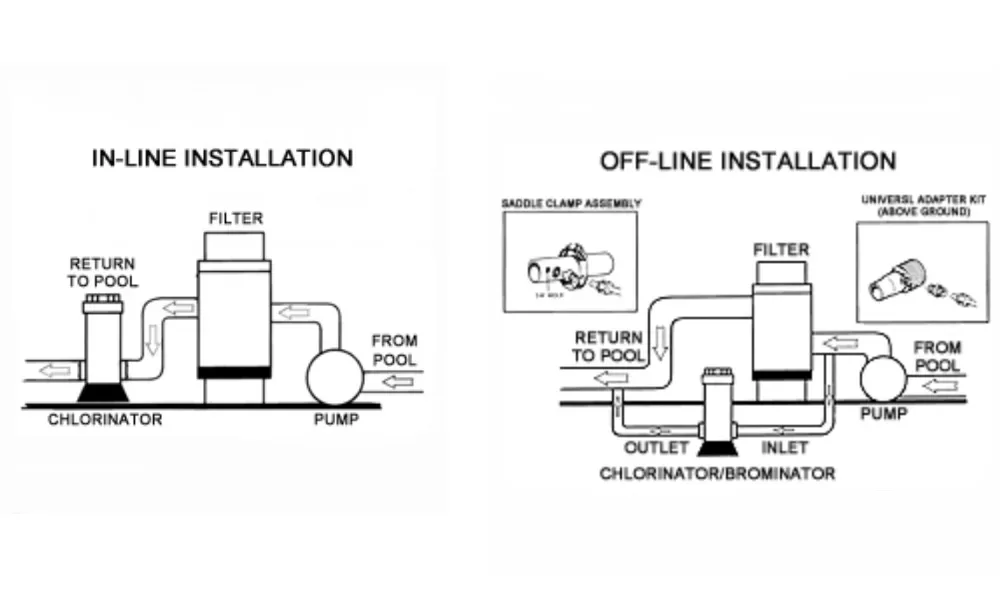
Pool chlorinators can be installed either off-line or in-line. Off-line chlorinators use a flexible hose or rigid pipe to carry water to and from the chlorinator chamber. Drill two small holes in your PVC plumbing, one before the filter and one on the return line, clamp on the fittings, and attach the hoses.
In-line chlorinators are plumbed into the PVC piping. This is a little more complicated to install, but typically has fewer problems with hoses or fittings clogging. To install an in-line chlorinator, cut a small section out of the return line and use some plumbing fittings and PVC glue to install the chlorinator, preferably in contact with the ground.
In many cases, there is simply not a suitable location for an in-line chlorinator to be installed. Perhaps there is not enough of a straight run of PVC (you need about a foot), or no area that would allow for easy access to the chlorinator to fill with chlorine tablets. In these cases, an offline chlorinator may be your best bet.
Three Most Common Pool Chlorinator Problems
Now, let’s take a look at some of the common pool chlorinator problems that a pool owner may have with chlorinators.
1. My chlorine tablets are not dissolving

- If an off-line chlorinator, make sure that the unit is not installed with the hoses backward.
- If an off-line chlorinator, check the injection fittings where the hoses attach. Clean with water and a paperclip.
- Is the dial on the side of the chlorinator turned up all the way?
- If the return line has a bypass valve for the heater, is enough water flowing through the chlorinator?
- An air lock may exist. With chlorinator lid removed, turn on filter pump. Screw on lid after it fills with water.
- Open the chlorinator and look for the area where water enters the chamber, inspect for calcium buildup.
2. My chlorine tablets are dissolving, but very slowly

- If an off-line chlorinator, check the injection fittings where the hoses attach. Clean with water and a paperclip.
- Is the dial on the side of the chlorinator turned up all the way?
- If the return line has a bypass valve for the heater, is enough water flowing through the chlorinator?
- An air lock may exist. With chlorinator lid removed, turn on filter pump. Screw on lid after it fills with water.
- Open the chlorinator and look for the area where water enters the chamber, inspect for calcium buildup.
3. My chlorinator lid is very tight, leaking, or won’t fit properly.
- Check the lid O-ring. It may be distended, or larger than intended.
- Lubricate the lid O-ring regularly. Use silicone lubricant only.
- Check the lid for calcium deposits. Remove with small screwdriver.
There are undoubtedly other problems that may pop up, but these are the biggies. Another more unusual complaint is that the chlorine tablets are dissolving, but the chlorine reading is non-existent. In this case, either there is a very large chlorine demand in the pool and you need to just add more tablets, or the level of cyanuric acid, aka conditioner or stabilizer, is high enough (over 100 ppm) that a chlorine lock is created.
Using a erosion feeder by Hayward or Pentair is the best way to use chlorine tablets or sticks. Floaters in the pool are less desirable for many reasons, but better than putting tablets in the skimmer basket.

